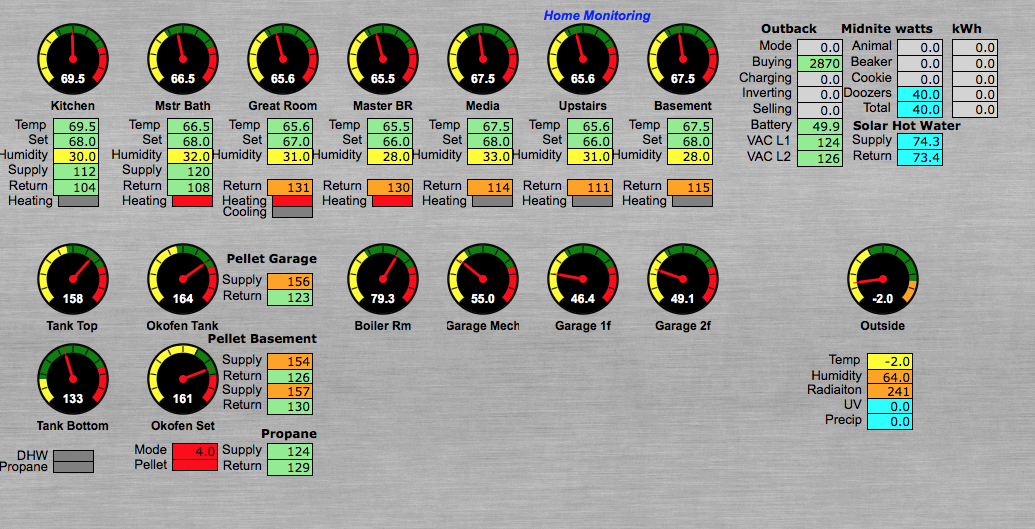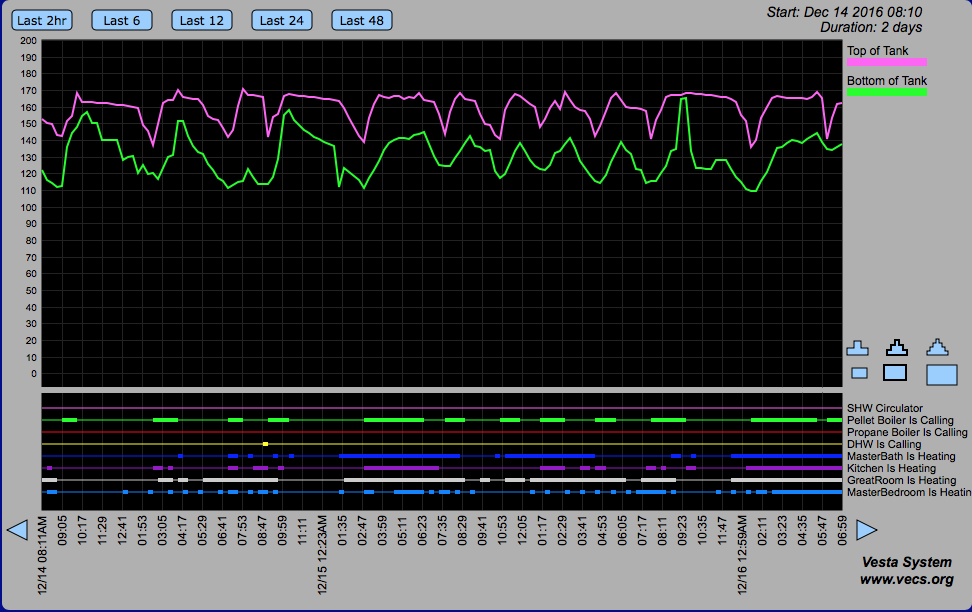Introduction
The Vesta product line from Vermont Energy Control Systems LLC is an open-source monitoring, datalogging, and control solution. It is non-proprietary and easily interfaced to other sensors and equipment.
This case study describes the use of a Vesta controller to collect and display live data from a wide variety of other systems. This case study falls at the ‘very complicated’ end of the spectrum, but it shows the power of the open source tools provided with the Vesta controllers.
Problem
The homeowner has multiple heating, cooling, control and monitoring systems in his house, from multiple manufacturers. He also has some home-grown equipment that collect data from a variety of sources. He wanted to aggregate data from all of his systems in a single place so that he could see the interactions between systems and provide a central consolidated graphical dashboard. Systems in the house include the following:
- Four-panel Solar hot water system with its own circulator controlled by a solar differential controller
- Okofen bulk-fed pellet boiler controlled with Ranco thermostat
- Propane boiler used as a backup heat source
- Taco zone controllers controlling 8 circulator pumps
- Large water storage tank used for thermal storage, with integrated indirect domestic hot water tank controlled with an aquastat
- Davis Vantage Pro weather station
- Nest thermostats controlling five hot water baseboard zones and two radiant zones
- 48 Solar panels connected to four Outback Solar inverters, four Midnite Solar charge controllers, and sixteen flooded lead acid batteries which provide backup power in the event of a commercial power outage
- Two Arduinos connected to a total of 26 one-wire temperature probes, a Raspberry Pi collecting weather from the Vantage Pro weather station, Nest data from the Nest API, status and performance data from the Okofen pellet boiler, Outback Solar production and consumption and the Midnite Solar charge controllers
Prior to installing the Vesta, the homeowner was using the Raspberry Pi and Arduinos to send data to a cloud-based database and graphing system (xively). This allowed him to see independent graphs of each monitored piece of equipment, temperature and data element, but did not provide any good way to see how each of the components interacted with each other.


